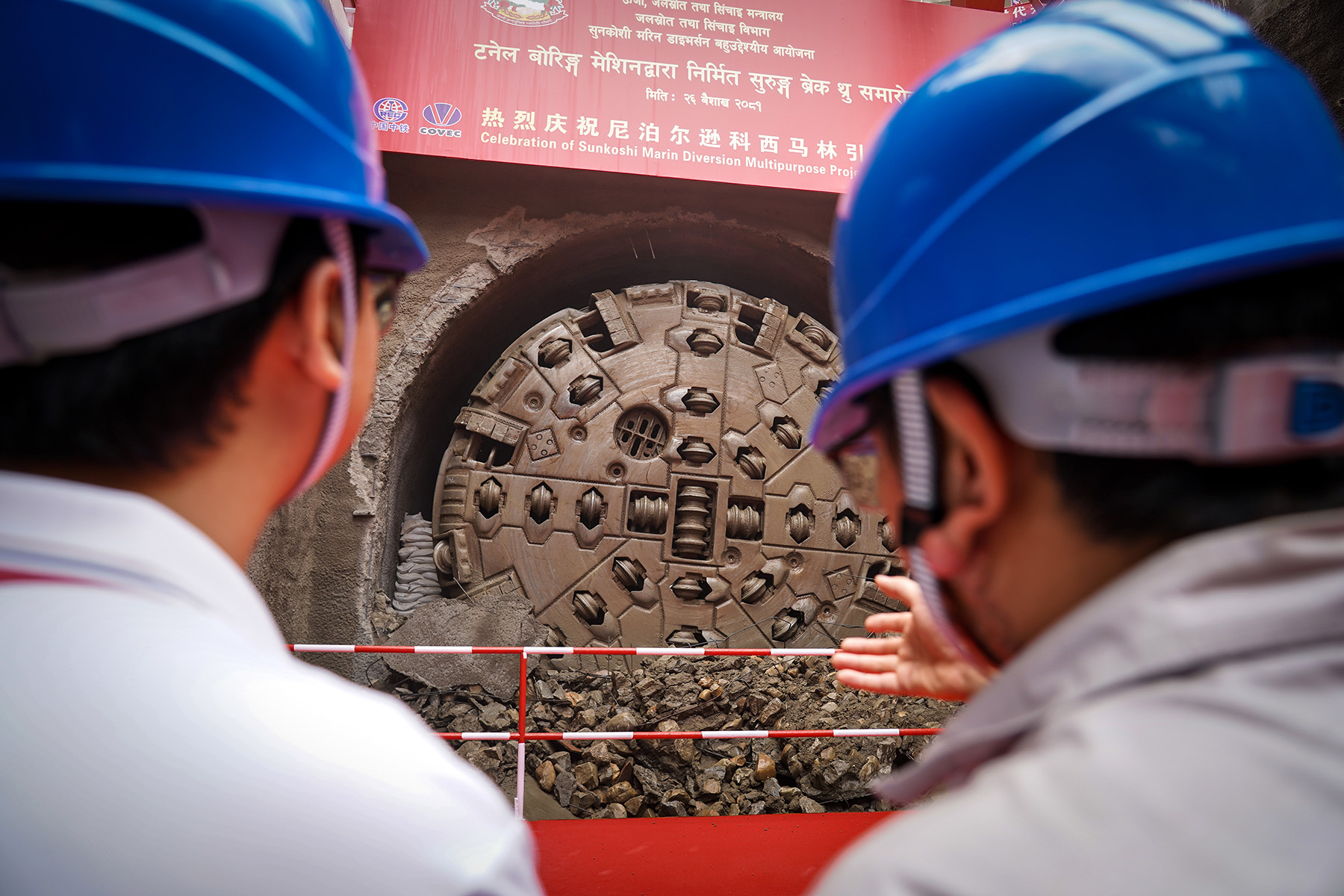Himalayas tunnel unveiled a year ahead of schedule, boosting power, agriculture

Deep in mountains south of the Himalayas range, Nepal's Prime Minister Pushpa Kamal Dahal pushed a button for a double-shield tunnel boring machine to break through the last section of a tunnel within minutes, to applause from workers and the audience.
In a major engineering breakthrough, the 13.3-kilometer-long tunnel under Nepal's Sunkoshi Marin diversion multipurpose project, jointly built by China Overseas Engineering Group and China Railway No 2 Group, was finally through on Wednesday, a year ahead of schedule.
READ MORE: Nepal reaps more gains from Chinese projects
This is a "transformative national pride project" contributing to the country's economy, productivity and prosperity, Dahal said.
The project aims to divert water from the Sunkoshi River to the Marin River through the tunnel to irrigate 122,000 hectares of farmland in the Terai Plains. In addition, a powerhouse is being built to generate 28.6 megawatts of electricity to alleviate the region's power shortage.
Construction of the tunnel started in August 2021, with the Chinese companies breaking world records in terms of tunneling speeds.
At the ceremony, China's Ambassador to Nepal Chen Song said the completion a year ahead of schedule "shows the Chinese speed with high quality and high standards".
"Chinese companies … contributed Chinese wisdom and Chinese solutions, and worked with technical personnel from Nepal to overcome all the difficulties such as geological conditions, logistics problems and a long monsoon period."
The project will support Nepal's economy, one-third of which depends on agriculture, and help reduce a trade imbalance stemming from food imports, Dahal said. "I also believe that the project will support skill and technology transfer and enhance the capacity of our institutions."
In addition, the China Foundation for Rural Development, or CFRD, and the United Nations Development Programme are working together to support schools and communities in Madhesh Province of Nepal.
On Wednesday, a city in the Sarlahi region launched a special project to support schools and communities in remote areas for pandemic prevention and green recovery, benefiting 15,000 students and 7,500 families.
In a speech, Ram Saroj Yadav, minister of physical infrastructure development of Madhesh Province, said China is developing large projects that are of great significance to Nepal's development and prosperity.
Chen said the project will help local students and communities withstand extreme weather events, disasters and other shocks.
Julien Chevillard, deputy resident representative for UN Development Programme Nepal, said investment in education and green recovery is essential to address the effects of climate change and achieve the UN's Sustainable Development Goals.
ALSO READ: China, Nepal to promote Belt and Road cooperation
Wu Peng, director of the CFRD's Department of International Development, said the organization has supported more than 60 districts in seven provinces of Nepal, directly benefiting more than 500,000 people.
Prakash Pun, president of the Hong Kong-Nepalese Business Association, told China Daily: "The Belt and Road Initiative and its related projects are helping Nepal a lot because the Chinese have high levels of technological expertise in areas such as construction and finance."
Xinhua contributed to this story.



